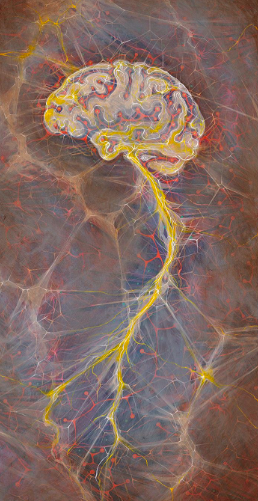Chronic Pain Relief Through Craniosacral Therapy: Your Path to Wellness
Craniosacral Therapy (CST) has its origin in the field of Osteopathic Medicine but has become more common in the massage and holistic field, due partly because of its effectiveness in treating many common complaints such as neck pain, back pain, jaw pain/tmj, migraines and stress related pain. Due to the ineffectiveness and side effects of pharmaceutical treatments for chronic pain (1), many people look for alternative holistic options to help relieve their pain.
What is Craniosacral Therapy?
From a biological perspective, craniosacral therapy works with the subtle rhythmic movement within the craniosacral system, which includes the membranes and cerebrospinal fluid that protect your brain and spinal cord. Using specific hand positions, I provide delicate, supportive touch to various parts of your body, tuning into this rhythmic motion. By listening to your body’s unique expression of this rhythm and gently encouraging it to find balance, the body’s natural ability to self-heal and self-regulate is restored.
At the level of the nervous system, this working with this cranial rhythm helps normalize sympathetic nerve activity, which is often increased in chronic pain patients (2,3), and following from this muscle tension and pain are reduced. Overall craniosacral therapy considers the interconnectedness of your physical, emotional, and spiritual well-being.
Jeff working on a patient with neck pain
Are There Any Scientific Studies or Research Supporting Craniosacral Therapy's Efficacy?
One of the main criticisms of holistic modalities in general is that they are rarely put through the rigor of clinical trials and are not evidence based, despite demonstrated effectiveness through countless patients who have directly benefited and numerous peer-reviewed publications and clinical trials. However, a recent meta-analysis of 10 clinical trials (4) that looked at 681 patients with neck and back pain, migraine, headache, fibromyalgia, epicondylitis, and pelvic girdle pain showed significant effects on reducing pain and improving function that lasted up to six months relative to sham without any adverse effects. This was the first meta-analysis to focus exclusively on chronic pain, demonstrating the robust effectiveness of craniosacral therapy for treating various types of chronic pain.
Full Text of the study can be found here: Haller, H., Lauche, R., Sundberg, T. et al. Craniosacral therapy for chronic pain: a systematic review and meta-analysis of randomized controlled trials. BMC Musculoskelet Disord 21, 1 (2020). https://doi.org/10.1186/s12891-019-3017-y
JEFF PUFNOCK MSOM PH.D L.AC.
My name is Jeff and I offer craniosacral therapy treatments to the communities of Fort Collins, Loveland, Longmont and other surrounding areas at our clinic in Old Town, Fort Collins, CO.
I recently relocated my practice, Embodied Wholeness, from North Idaho to Colorado in search of a bit more sunshine and warmth and I am looking forward to helping the community in our new town. I am a nationally board-certified and Colorado state licensed acupuncturists with a 4-year Master’s degree in Classical Chinese Medicine as well as extensive training in craniosacral therapy and other healing modalities.
Please see my offerings page for more information about my practice and my educational background.
I look forward to seeing you around town!
In Health,
Jeff
Our clinic treatment room in Old Town, Fort Collins
Article References:
1) Chou R, Deyo R, Friedly J, Skelly A, Weimer M, Fu R, Dana T, Kraegel P, Griffin J, Grusing S: Systemic pharmacologic therapies for low Back pain: a systematic review for an American College of Physicians Clinical Practice Guideline. Ann Intern Med. 2017;166(7):480–92. https://doi.org/10.7326/m16-2458.
2) Cutler MJ, Holland BS, Stupski BA, Gamber RG, Smith ML. Cranial manipulation can alter sleep latency and sympathetic nerve activity in humans: a pilot study. J Altern Complement Med. 2005;11(1):103–8. https://doi.org/10.1089/act.2005.11.103.
3) Brough N, Lindenmeyer A, Thistlethwaite J, Lewith G, Stewart-Brown S. Perspectives on the effects and mechanisms of craniosacral therapy: a qualitative study of users' views. Eur J Integr Med. 2014;7(2):172–83. https://doi.org/10.1016/j.eujim.2014.10.003.
4) Haller H, Lauche R, Sundberg T, Dobos G, Cramer H. Craniosacral therapy for chronic pain: a systematic review and meta-analysis of randomized controlled trials. BMC Musculoskelet Disord. 2019 Dec 31;21(1):1. doi: 10.1186/s12891-019-3017-y. PMID: 31892357; PMCID: PMC6937867.
SHARE TO SOCIAL MEDIA:




